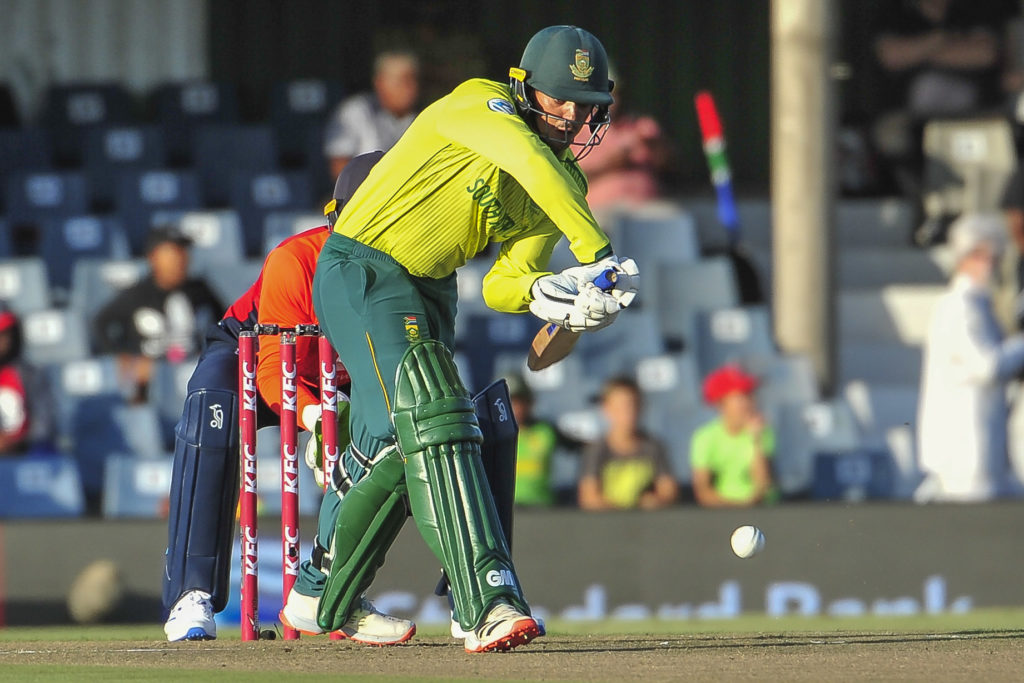A lack of depth in critical positions, as well as the scarcity of X factor, threatens to undermine the Proteas’ T20 World Cup challenge, writes RYAN VREDE.
With just five T20I matches to play before the World Cup in the UAE and Oman, the Proteas have a number of issues to address.
Among these, is their middle order’s impotency and death-bowling struggles that skipper Temba Bavuma has lamented with increasing regularity.
Both these deficiencies were exposed in the series against the West Indies a month ago, while Ireland’s performances in the ODI series highlighted the struggles of certain individuals who are likely to be in the starting XI at the World Cup.
I’ve watched with envy as England built frightening depth in their ranks. So too, India, both of whom are in South Africa’s pool at the World Cup.
These sides will arrive at the tournament with the capacity to negotiate injury or loss of form relatively comfortably. Evidence of this was seen earlier this week when Jason Roy, who is on the fringes of England’s T20I squad, played a blinder against Pakistan.
It highlighted the shortcomings of the Proteas squad and, while I understand that England and India have benefited from more matches, it doesn’t ease the concerns.
The dependence on Quinton de Kock’s form is most concerning. De Kock has excelled across all formats since being relieved of the captaincy, and possesses a degree of X factor none of his teammates currently do. At his best, he is a match-defining force.
Tabraiz Shamsi’s performances of late has underlined why he is the world’s top-ranked T20 bowler, but beyond him and De Kock, there are painfully few players the opposition would identify as having X factor to the degree they should be concerned about.
David Miller’s inconsistency has wiped him from that list. The middle-order batsman still has a long hit in him, but he has long ceased to be a player who strikes fear into the opposition.
Drilling down to specific positions, the Proteas are covered for openers. De Kock and Bavuma, who average 43 as a partnership in T20I cricket, will front the new ball at the World Cup. Janneman Malan and Aiden Markram, currently being deployed at three and four, respectively, are able to cover at the top of the order if needed.
The Proteas’ depth problems start thereafter. I’m concerned about a potential replacement for Rassie van der Dussen, given that the Proteas don’t have a clutch of batters with a similar skill set. Losing him would really hurt them.
I’ve already highlighted Miller’s struggles. He has been deployed as a finisher for some time, but has consistently underwhelmed, robbing the Proteas’ of a boundary hitter down the order. Heinrich Klaasen has been equally poor, while Kyle Vererynne hasn’t had the opportunities needed to establish his competency, or lack thereof, in the role.
Elsewhere, there are a number of all-rounders, but few who have consistently excelled in a manner that instils confidence. Dwaine Pretorius’ Covid-19-related absence has hurt the side, and while George Linde has shined with the ball, his batting failed to rise to the same level. Wiaan Mulder and Bjorn Fortuin haven’t been tested sufficiently to have any certainty about their contributions, should they be called on.
With the ball, the Proteas have struggled to restrict their opponents outside the PowerPlay. There are no natural death bowlers in their squad, which has forced them to look to seamers who don’t possess the requisite skills to do this job. This needs to be addressed by the coaching staff as a matter of urgency.
There are five T20I matches to go before the World Cup and the Proteas are still looking for answers in areas that should be considered cornerstones of their challenge. Their depth is one such example.







